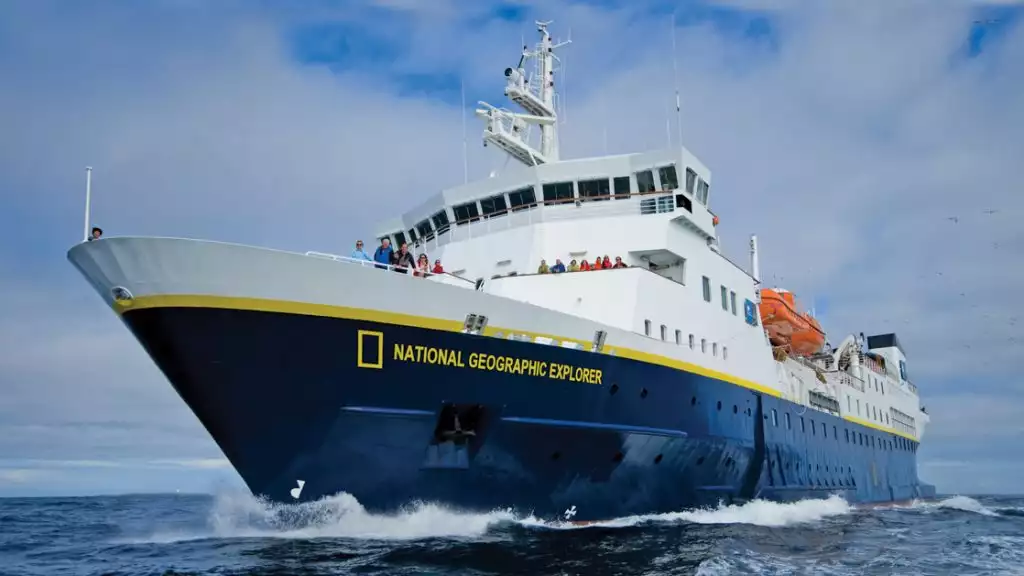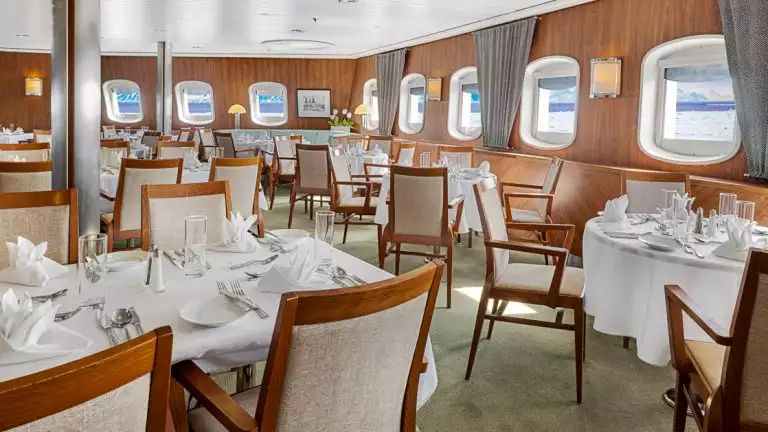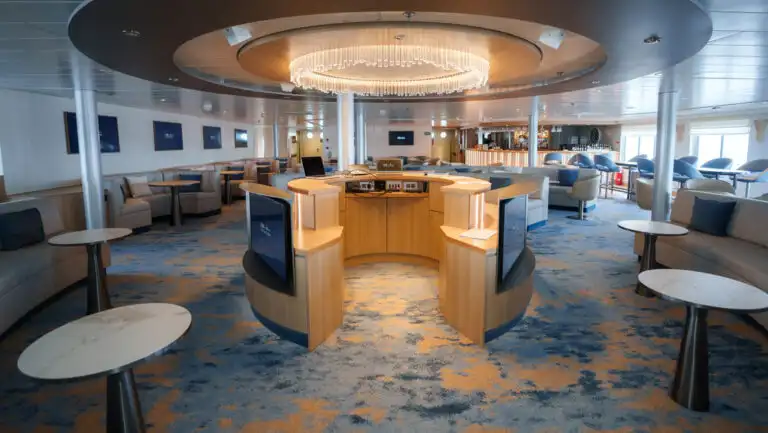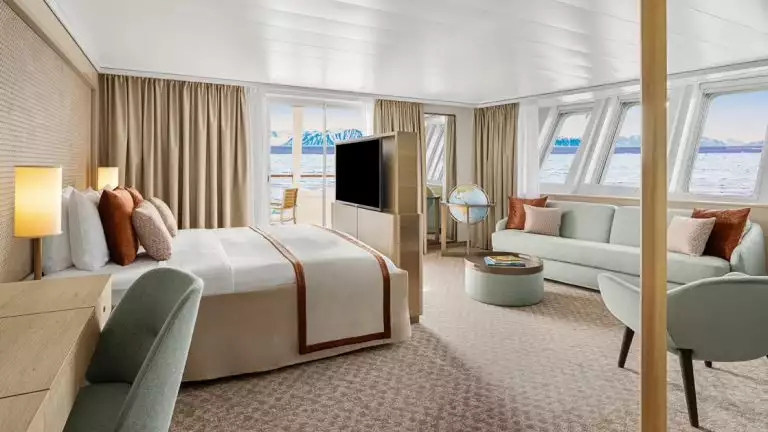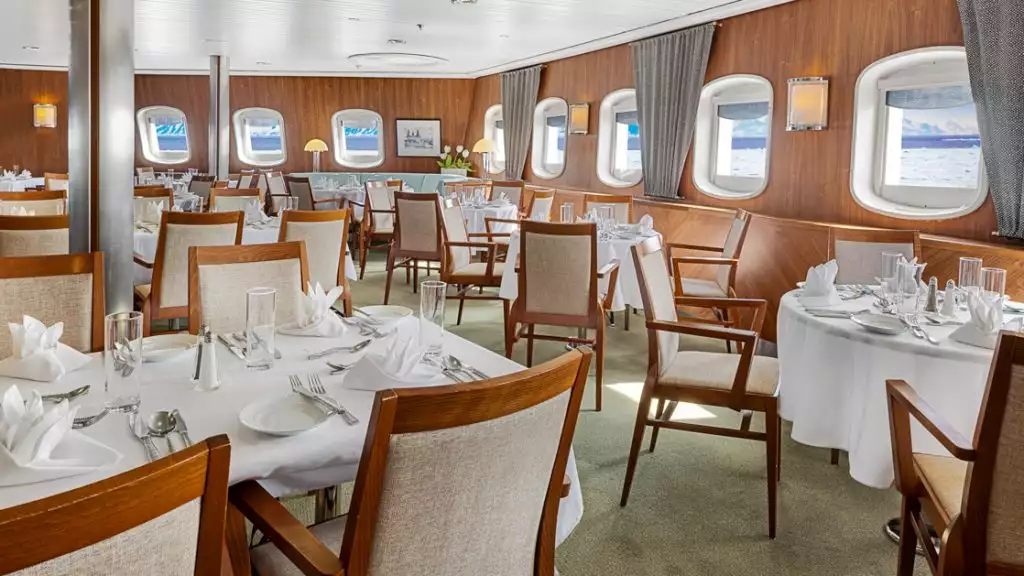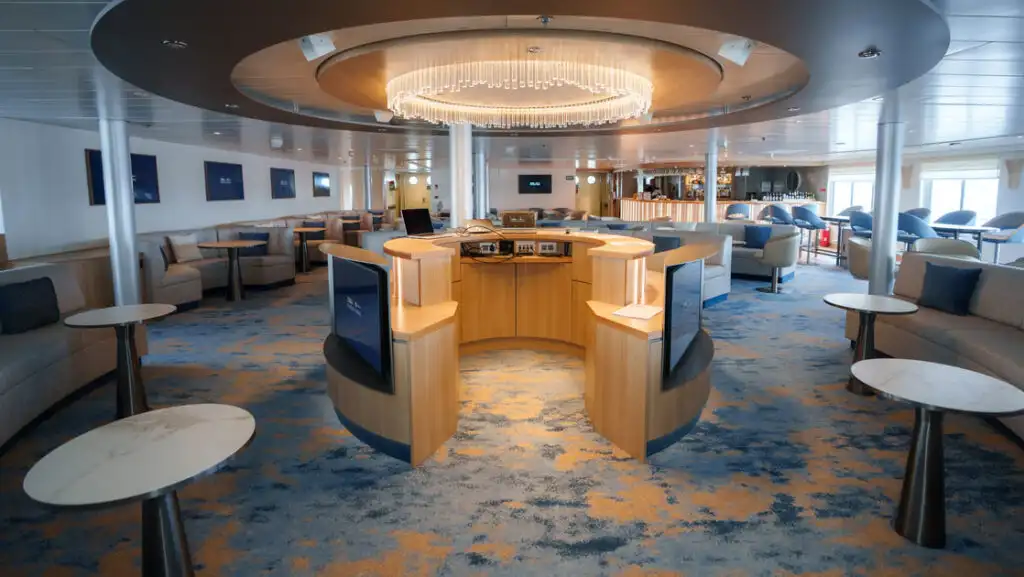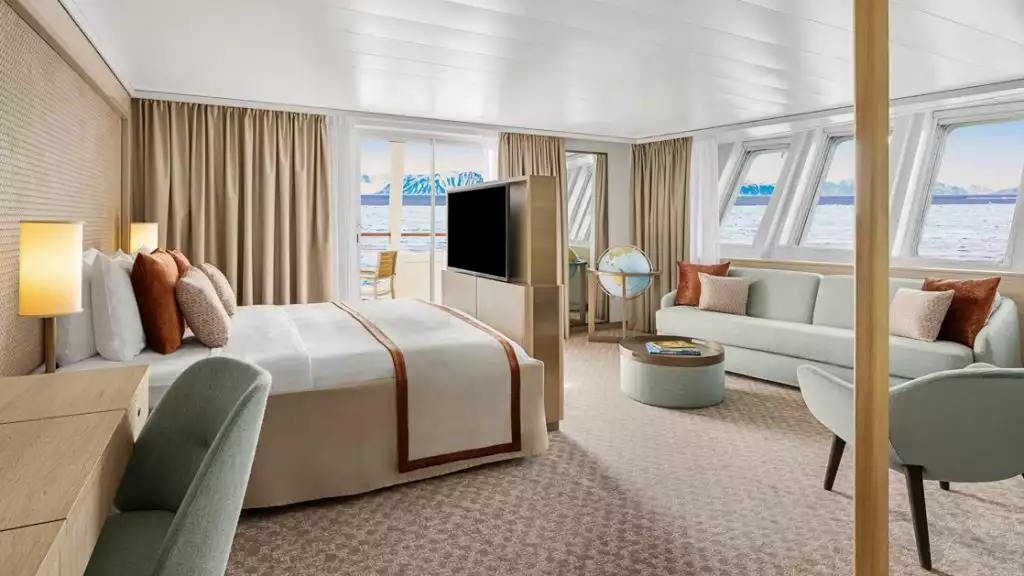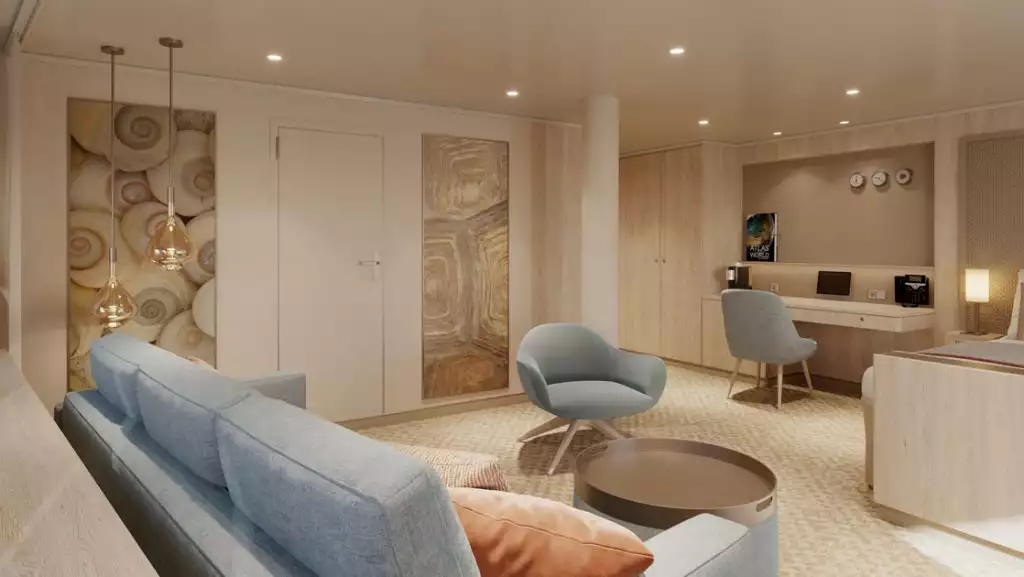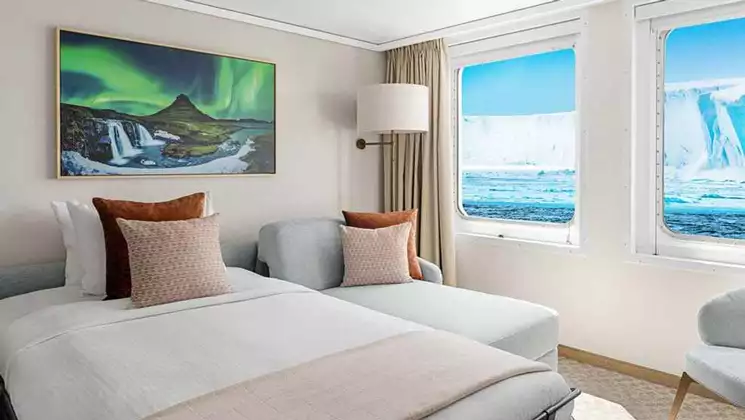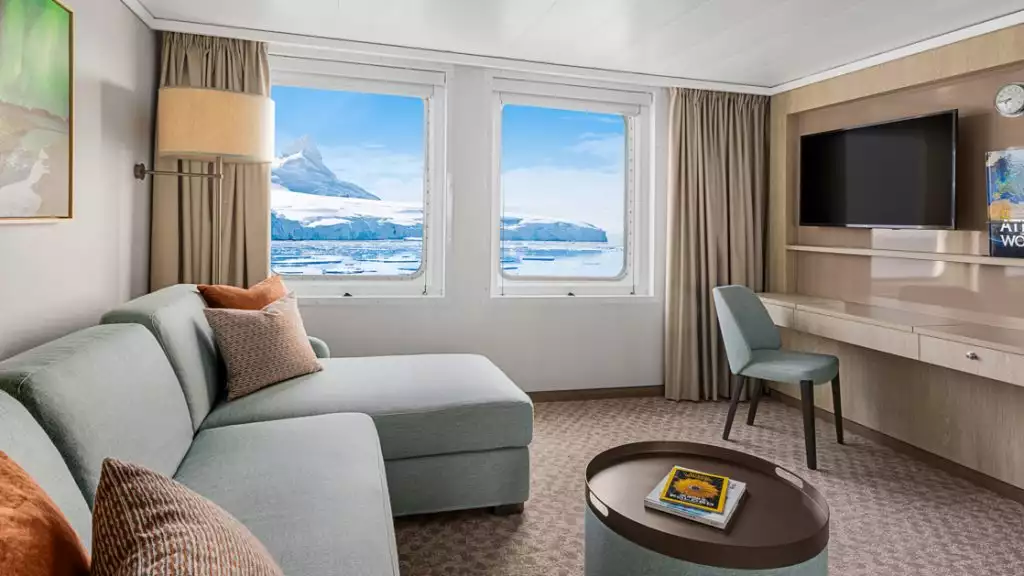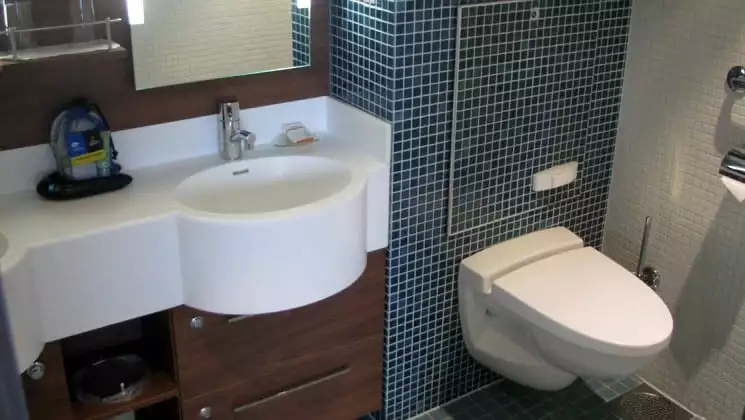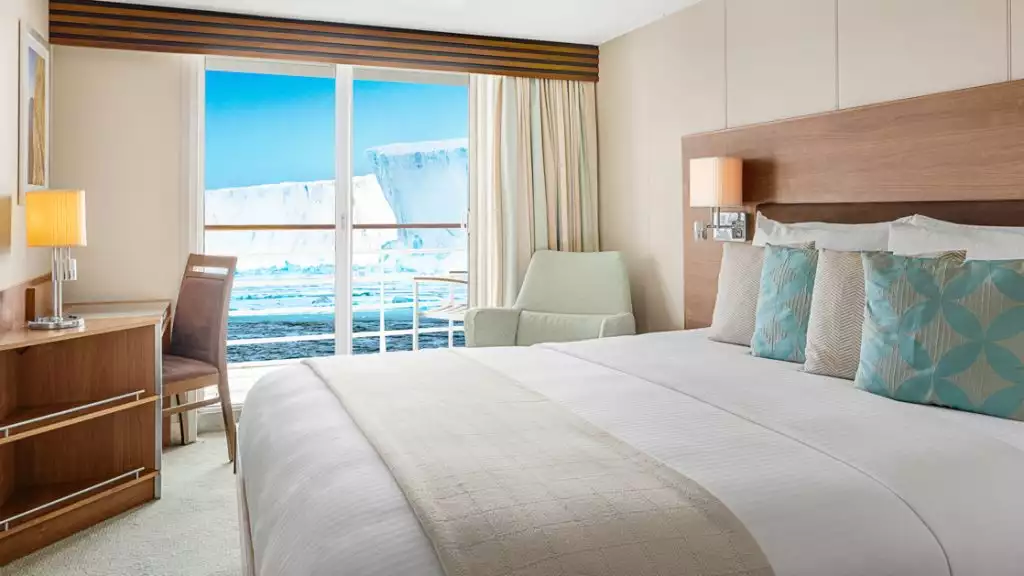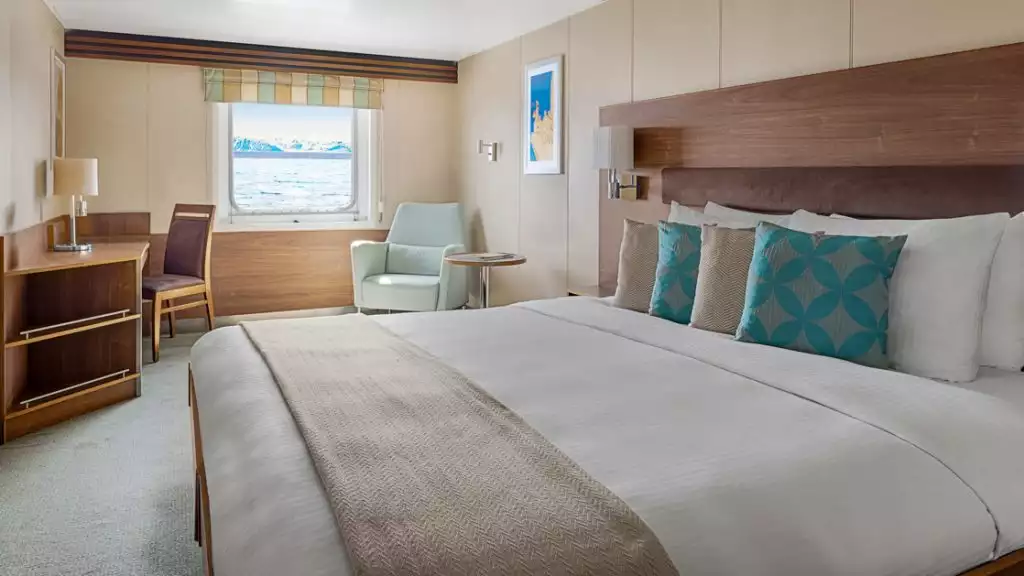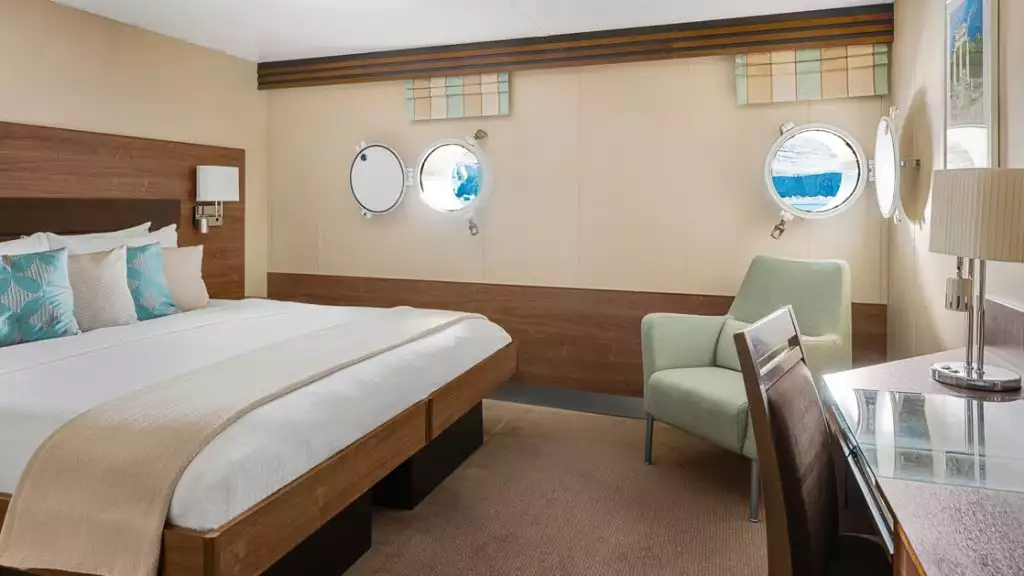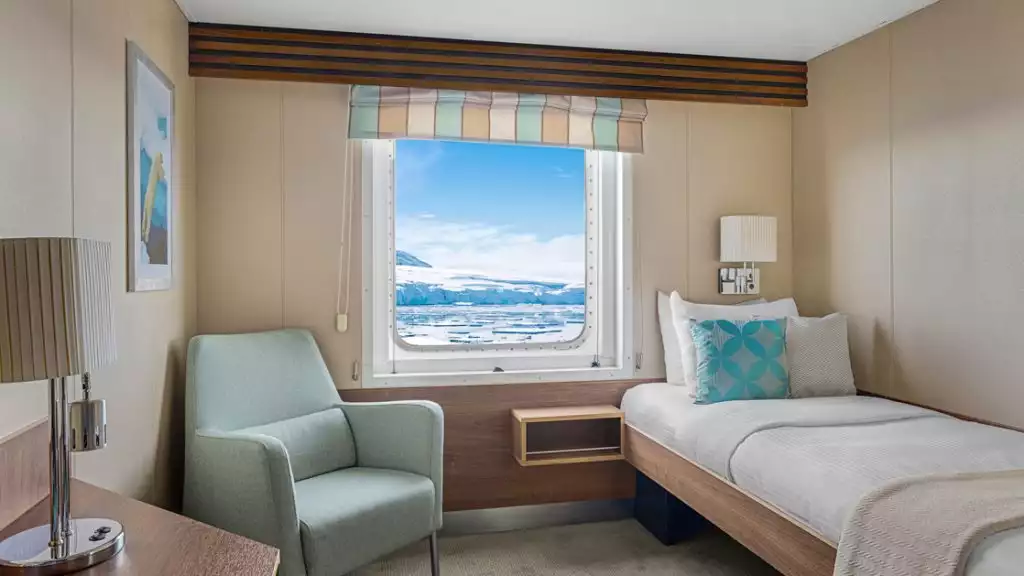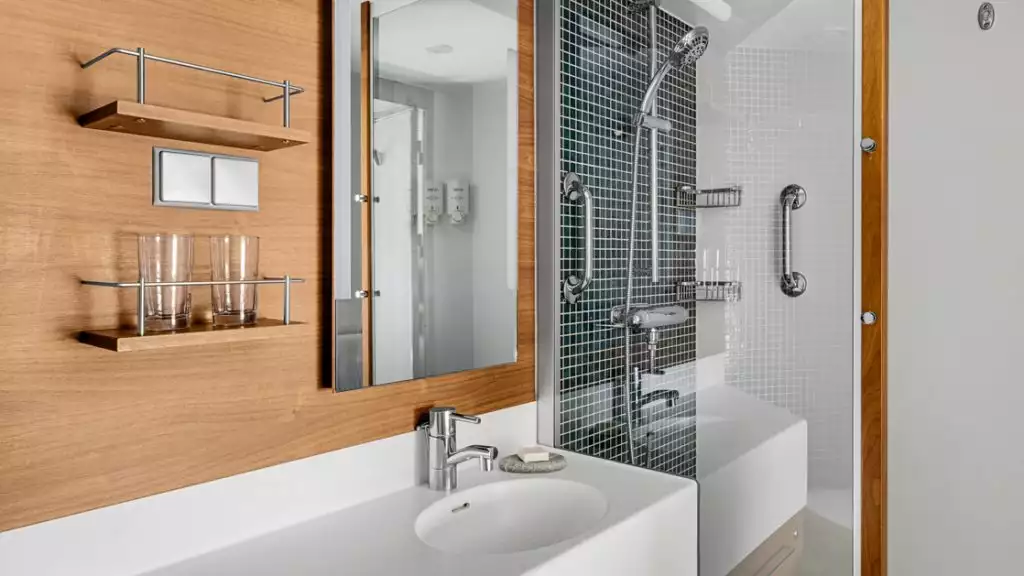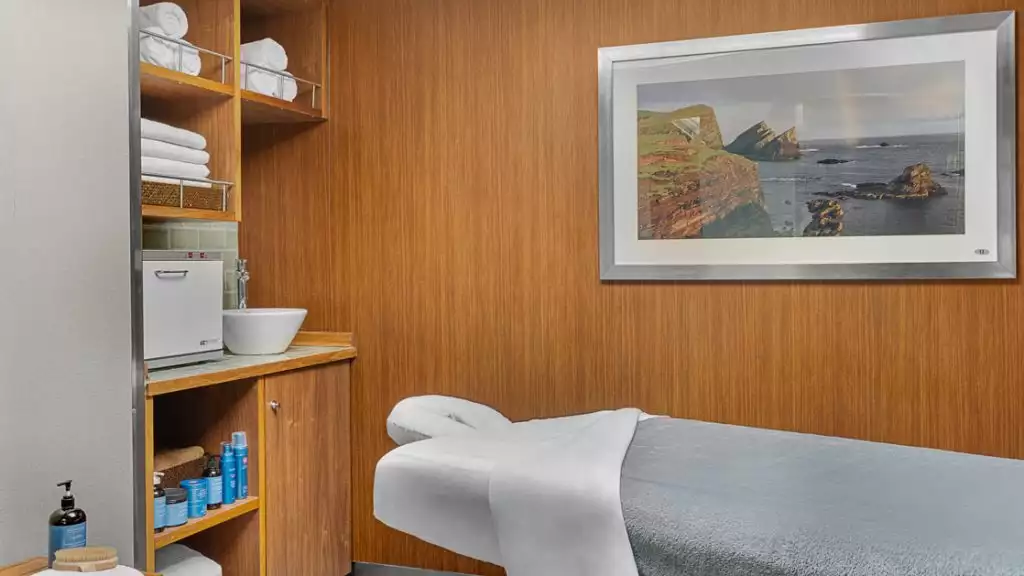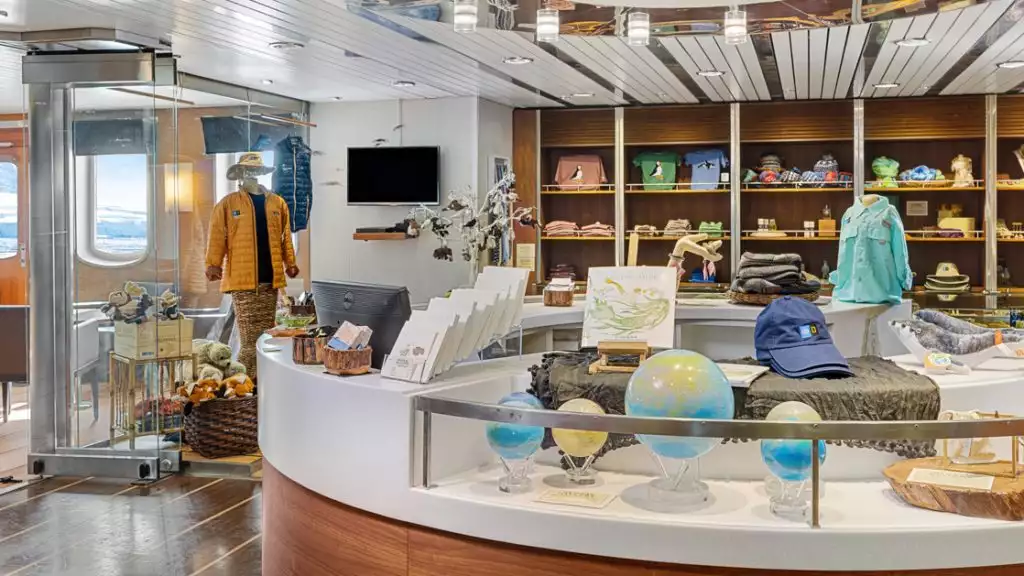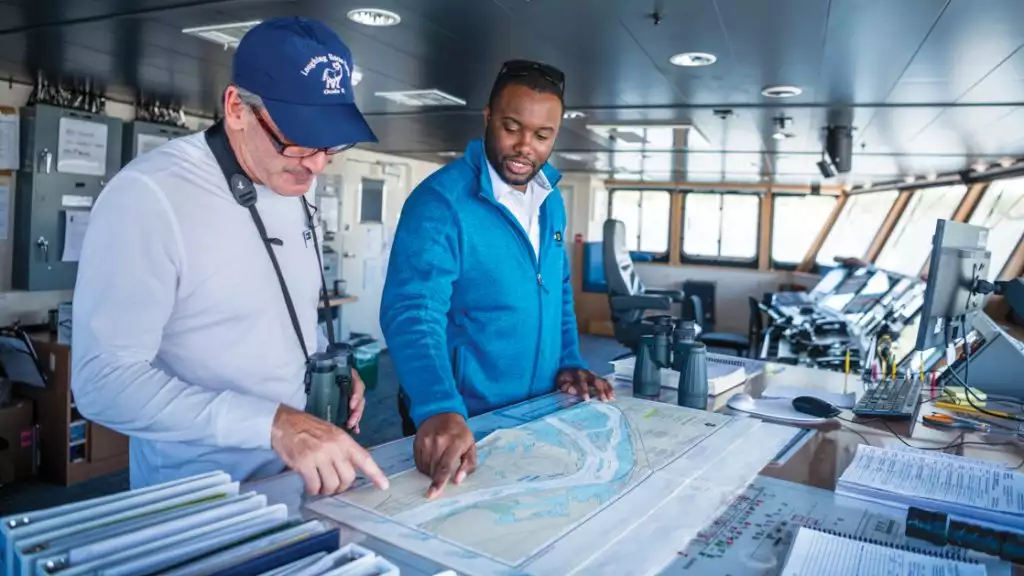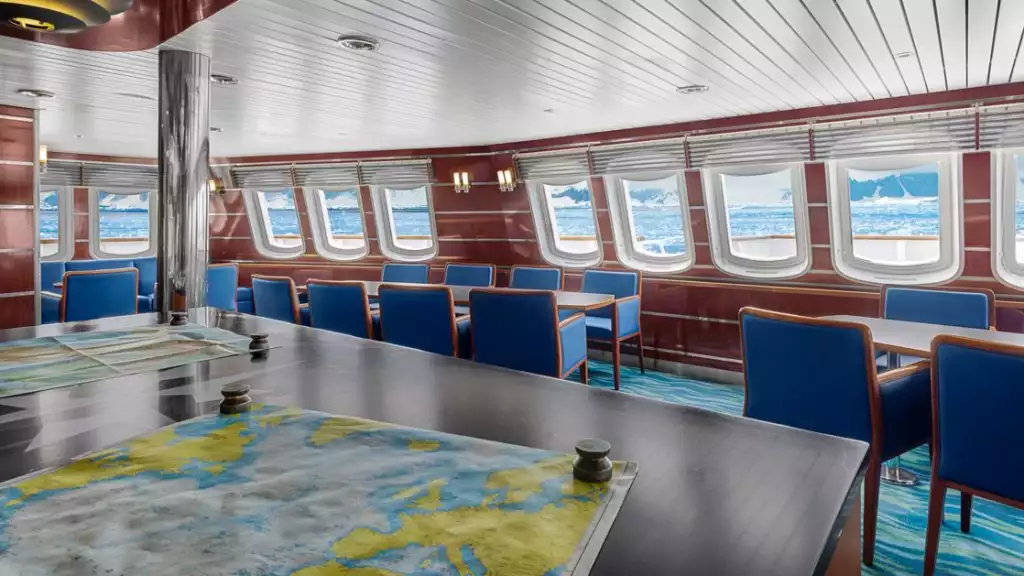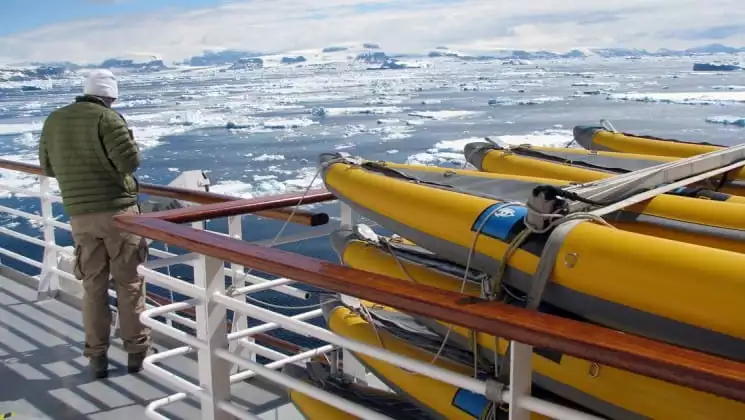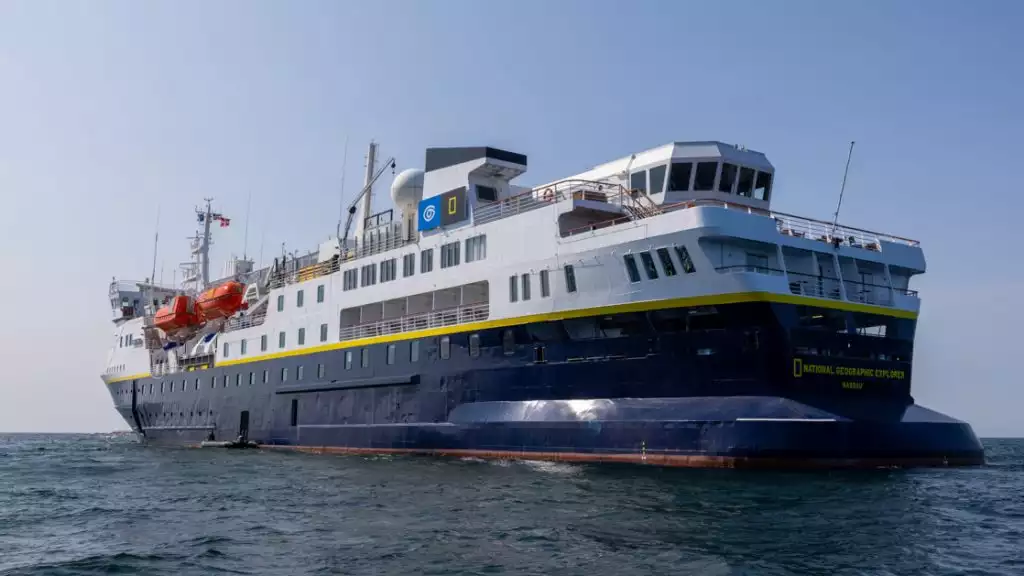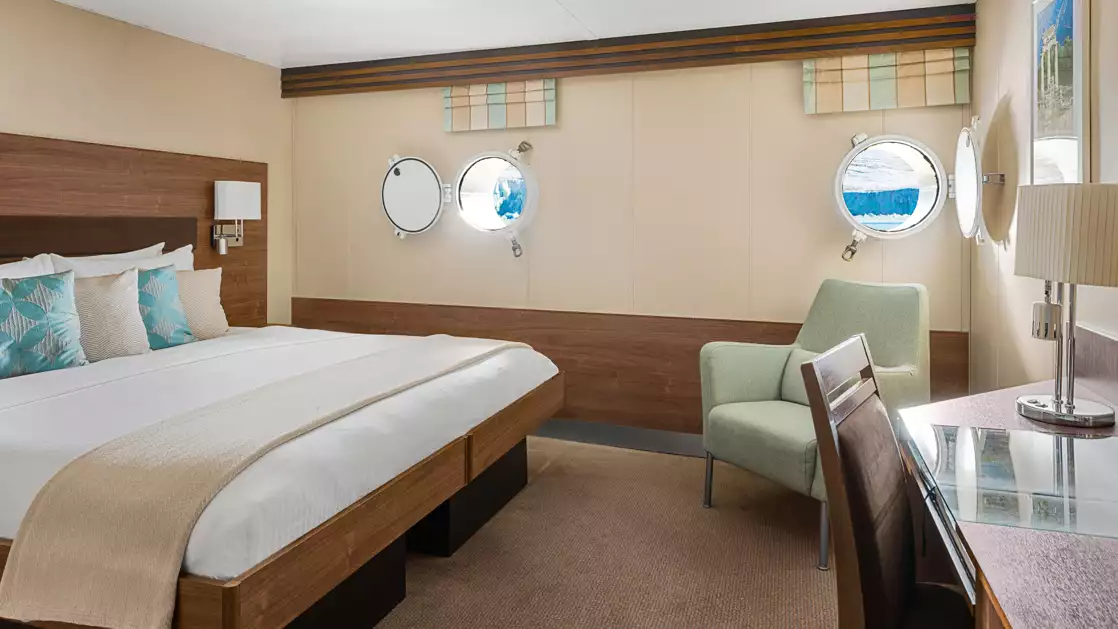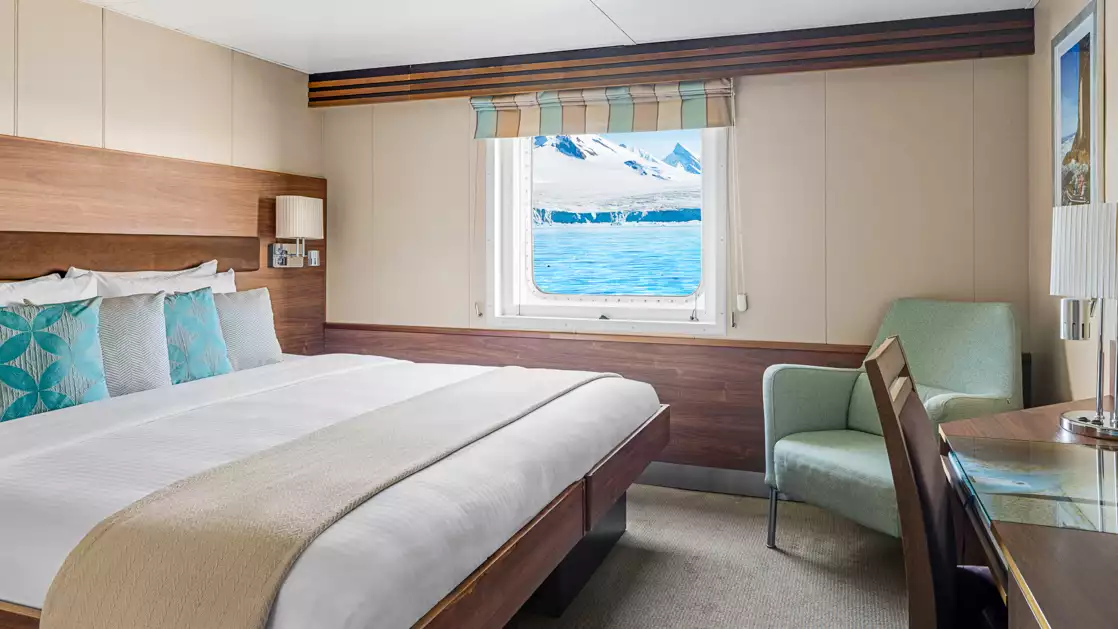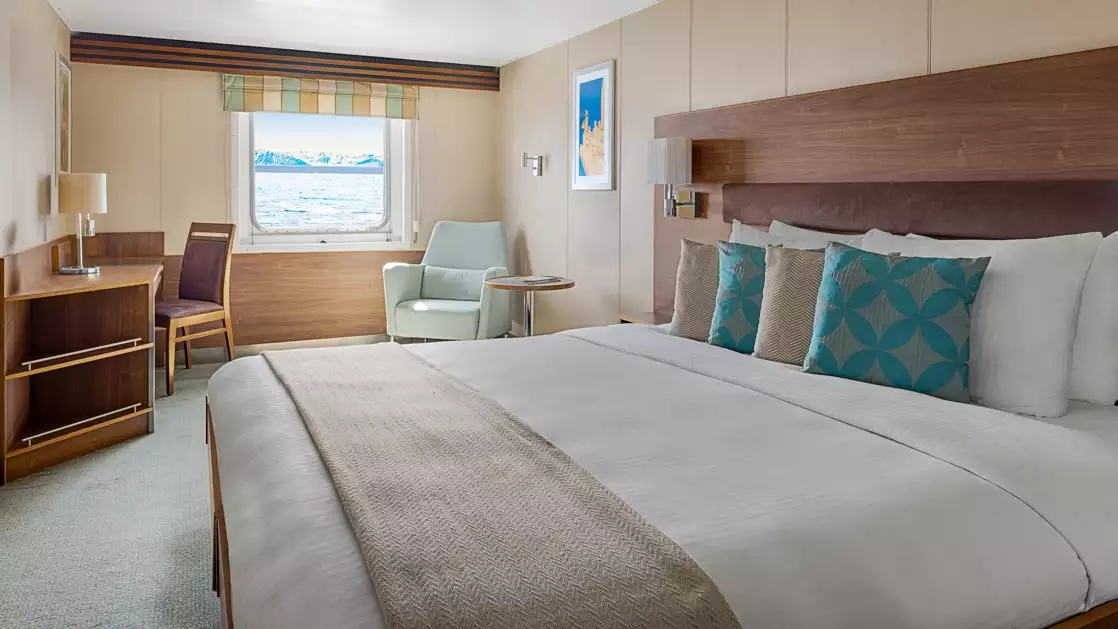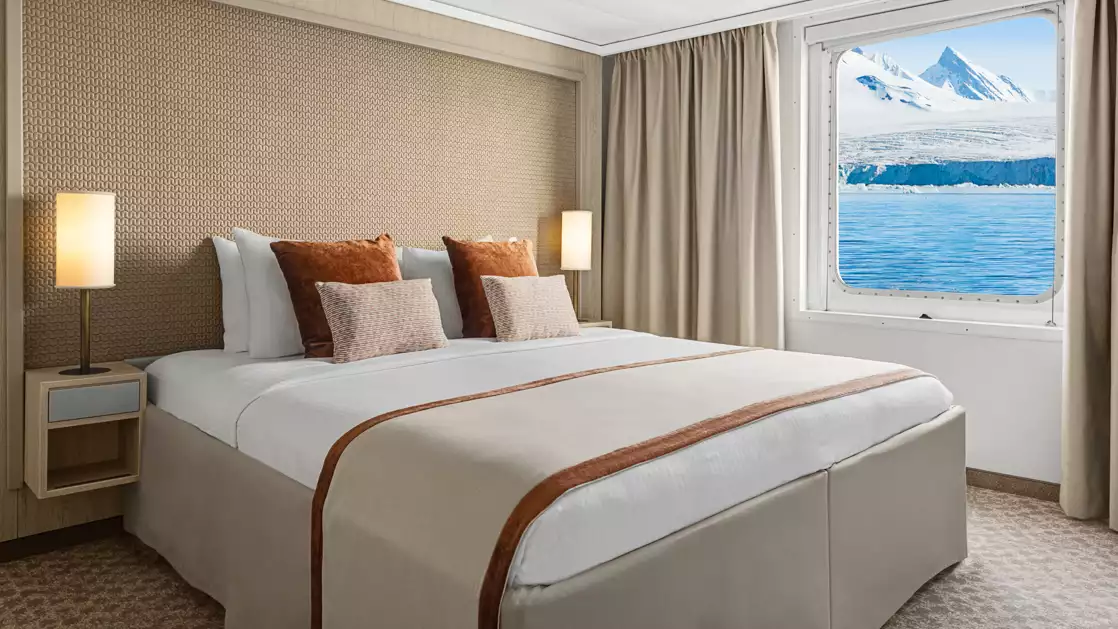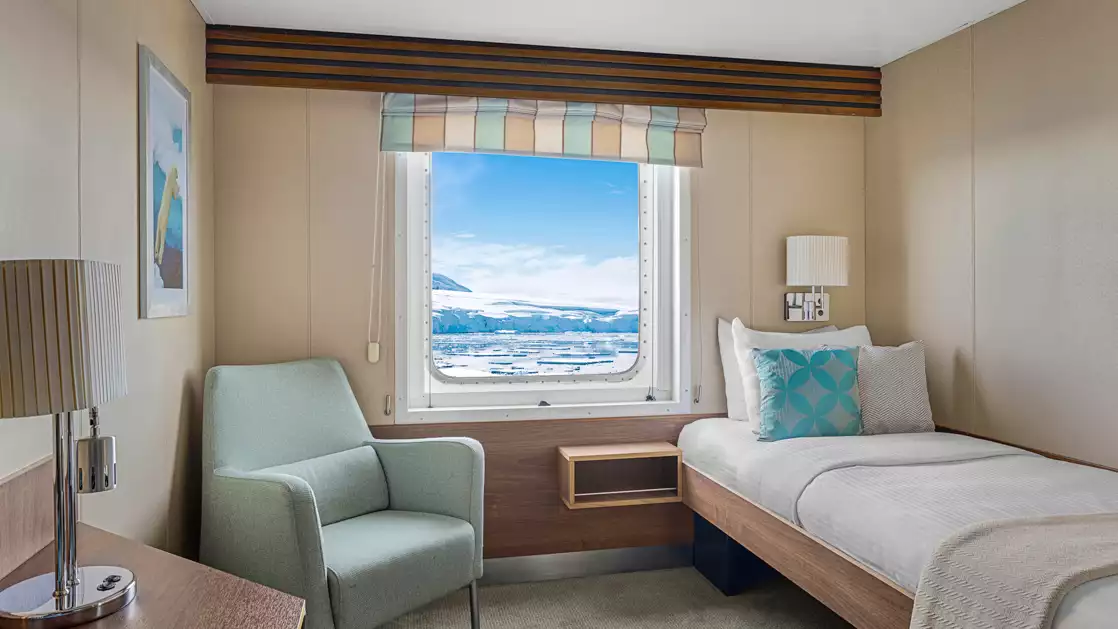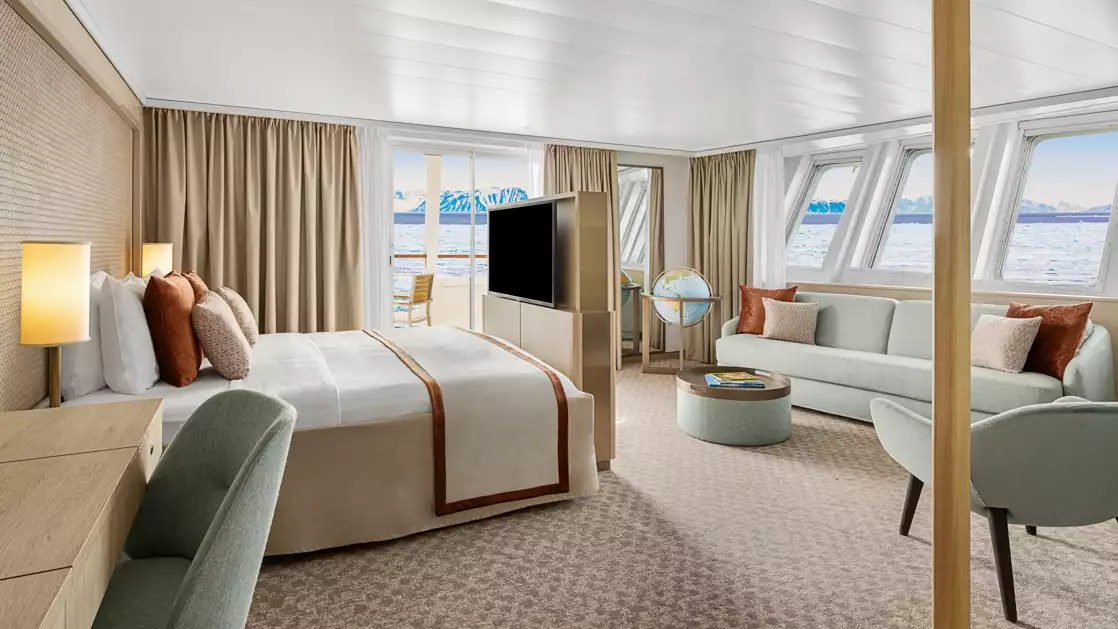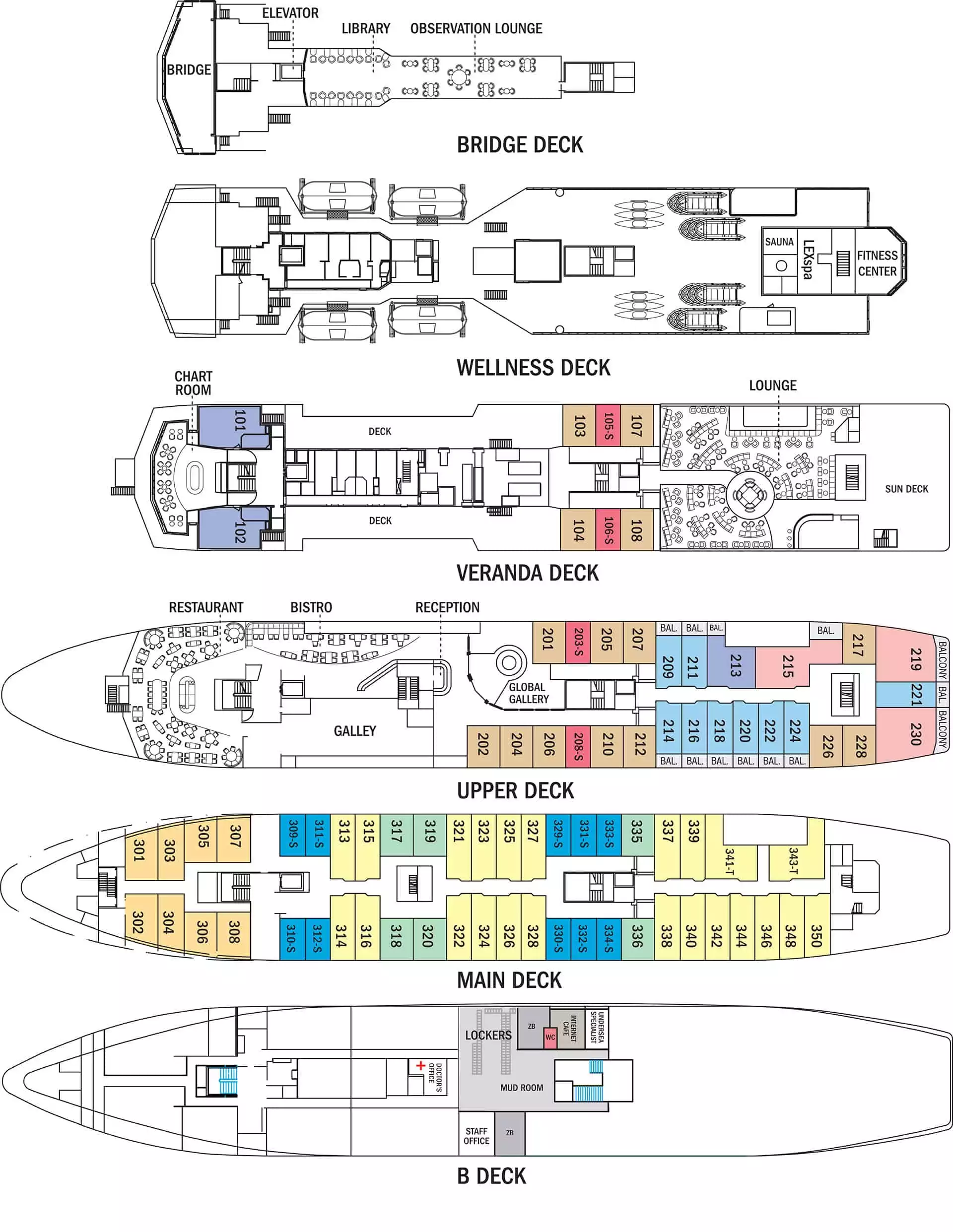National Geographic Explorer
- capacity
- 148 guests
- year built
- 1982
- remodeled
- 2008
- crew members
- 99
- length
- 367 feet
- beam
- 54 feet
- draft
- 16 feet
- cruising speed
- 18 knots
- flag
- Bahamas
- ice class
- 1A
The National Geographic Explorer is a polar expedition vessel that holds 148 guests in 81 outside cabins. Her design and equipment is the result of almost 200 years of collective expedition experience. She is equipped with an ice-strengthened hull and advanced navigation equipment for polar expeditions and is perfectly maneuverable for polar passages while providing exceptional comfort. She carries kayaks and a fleet of Zodiac landing crafts. And an undersea specialist operates a remotely operated vehicle (ROV) and sophisticated video equipment, extending access to the underwater world.
National Geographic Explorer – In Detail:
Our Review
Common Areas & Amenities
Activities Aboard
Dining & Cuisine
Cabins & Suites & Deck Plan
National Geographic Explorer Review
AdventureSmith Explorations’ National Geographic Explorer review includes a detailed description of the small ship including deck plans and a photo gallery. Our experts have sailed aboard the National Geographic Explorer firsthand in Antarctica. Please read our National Geographic Explorer review below then contact our small cruise ship experts to compare the National Geographic Explorer with other Antarctica ships and polar expedition ships and yachts.

OUR EXPERTS SAILED
You have questions.
We have answers.
The National Geographic Explorer is one of the finest expedition ships in the world operating Antarctica cruises, Antarctica air cruise itineraries, Greenland cruises, Patagonia cruises, Arctic cruises, Iceland cruises, small ship cruises in Northern Europe, East Coast cruises and Canada small ship cruises. She is equipped for true expeditions to the farthest reaches of our planet in safety and comfort. At 148 guests and 356 feet, she is larger than many other expeditions ships but her size adds stability and endurance for longer voyages. She is still small enough to access remote locations favored by small ship expeditions.
Choose the National Geographic Explorer if you are an active and inquisitive traveler seeking one of the finest ships combined with the best onboard experts from National Geographic. The expert guides and equipment on board this next-generation ship provide the finest intellectual and educational experience of any expedition cruise. If you are seeking an upscale expedition ship, with top guides synonymous with Nat Geo cruises, the National Geographic Explorer is the right expedition ship for you.
Common Areas & Amenities Aboard Nat Geo Explorer
Guests aboard the Explorer enjoy a Bistro Bar; forward-located Chart Room; restaurant; Global Gallery featuring practical items, regional handicrafts and art; library; lounge with full-service bar and state-of-the-art facilities for films, slideshows and presentations; mud room with lockers for expedition gear; and an observation lounge. An “Open Bridge” provides guests an opportunity to meet Explorer’s officers and captain and learn about navigation.
A full-time doctor, Internet cafe and laundry are also available. The vessel is staffed by two Wellness Specialists and features a glass-enclosed Fitness Center, outdoor stretching area, two LEXSpa treatment rooms and Swedish sauna, perfect for quick warm-ups after polar plunges or as a relaxing way to end the day. The fitness center with its expansive floor-to-ceiling windows and 180-degree vista offers a “million-dollar view” along with exercise bikes, elliptical machines and treadmills, free weights, yoga mats and exercise balls. From early-morning yoga or stretching on deck or in the lounge to massages and face, hand or body treatments inspired by the location, the onboard wellness specialists help guests achieve a more relaxed and revitalized state of being, great for days spent at sea.
Nat Geo Explorer also offers internet access (one device at a time) via three tiers: time-limited complimentary “basic” internet, for app messaging, email and simple social media; time-limited “enhanced” internet, adding general web browsing and video conferencing capabilities; and “premium” internet, for unlimited access to all features under the “enhanced” plan. Please note: WiFi is satellite based and may be compromised by inclement weather or remote locations.
Activities Aboard National Geographic Explorer
National Geographic Explorer carries a full fleet of 15 Zodiac landing crafts, allowing guides to get the entire expedition community off ship and engaged in activities quickly, comfortably and safely. Widely regarded as the most robust watercraft available, these Zodiacs can push through pack ice and run up on sandy shores. Also on board are 36 two-person AIRE inflatable kayaks, a fleet large enough to ensure everyone who wants to can paddle at every opportunity. Specifically chosen because of their inherent stability and suitability for polar waters, AIREs are virtually untippable. Consequently, prior kayaking experience is not necessary; many guests aboard National Geographic Explorer have had their first kayaking experience in extraordinary locations. Kayakers are usually free to explore where they want within boundaries set by the undersea specialist and officer of the watch.
Unique in-ship Zodiac boarding stations, designed by VP-Marine Operations Captain Leif Skog, allow guests to step into Zodiacs and kayaks safely—and dry—from a secure platform inside the ship rather than a ladder dangling outside. With two possible embarkation gates, the Explorer unloads her guests into Zodiacs more quickly, meaning you’ll have more time ashore and less time waiting. Adjacent these boarding stations is the mudroom and lockers for guests, where expedition gear can be stored separate from cabins. On warm-weather itineraries where there will be snorkeling, a mask, snorkel, fins and wetsuit are provided for the duration of the expedition. On select cold-weather itineraries, cross-country ski gear may be available.
Additional tools for exploration aboard National Geographic Explorer include:
Underwater Camera
An undersea specialist will dive almost every day of Explorer’s expeditions, even in Antarctica or the Arctic, with almost 200 pounds of gear, to shoot high-definition, Cousteau-like footage of the deep. Colorful nudibranchs, plant-like crinoids and mysterious fish with antifreeze blood that thrive in the frigid sea will give you an entirely new appreciation of the marine environment.
Remotely Operated Vehicle
Capable of reaching 1,000 feet, far beyond the range of any scuba diver, the ROV allows guests to literally view parts of the undersea that are as unexplored as the moon. By sharing videos of potentially new species with scientists, such as a large worm an onboard specialist captured in the Weddell Sea, each expedition actively contributes to science and may fundamentally change how the ocean is viewed.
Video Microscope
Naturalists will use the video microscope to help explain all elements of the environment, including tiny organisms that are the building block of the marine ecosystem. Spellbinding images of a krill’s body, at 80x magnification, fills the plasma screens in the lounge with vivid detail, and fills every onlooker with a sense of wonder at the importance of an otherwise unobservable creature.
Crow’s Nest Camera
Perched high atop the vessel on the ship’s mast, this camera provides a continual view on the outside world that can be seen on in-room cabin TVs. From zooming in on a distant polar bear to simply watching the bow crush through ice flows, each guest gets a unique perspective of their surroundings. The extra height from the camera also aids the captain by allowing him to peer at ice conditions farther ahead.
Hydrophones
These underwater microphones are deployed to listen to the vocalizations of marine mammals. Real-time transmissions of their eerie, haunting sounds can be broadcast through the ship or recorded for later playback.
Dining Aboard National Geographic Explorer
Meals are served in the ship’s elegant dining room and the adjacent, more intimate Bistro Bar. Seating is open, allowing you to choose where to dine, and table sizes range from 2 to 12. The style is relaxed and casual—there’s never a need to dress up, and there will be opportunities to chat with the onboard naturalists and guest speakers over a meal. Each evening, a ship’s officer, National Geographic staff or a naturalist hosts small tables in the chart room.
All food prepared aboard National Geographic Explorer is sourced locally whenever possible from sustainable providers, with special attention to all seafood being sustainably caught or raised. Breakfast is usually served buffet-style in the dining room and consists of a selection of fruit, eggs to order, cereal, yogurts, cheese and cold meats, plus specially prepared daily dishes, fresh coffee and tea. An early-riser continental breakfast is served in the bistro as well, and many guests choose to take their coffee and morning pastries to the bridge or out on deck. Lunch is also served buffet-style in the dining room and Bistro Bar, with salads and both hot and cold buffet choices available. Most days a light-lunch option is held in the observation lounge at the very top of the ship. When weather conditions permit, the light-lunch is held outdoors on the aft sundeck, offering a stunning backdrop. Depending on the day’s activities, an afternoon tea with cookies, or occasionally, cakes and pastries, is served buffet-style in the Bistro Bar. Dinners are served in the dining room and bistro and feature plated service.
Cabins & Deck Plan Aboard National Geographic Explorer
Soothingly decorated in quiet earth tones, National Geographic Explorer’s 81 spacious cabins each offer a large desk, ample drawer space, signature feather duvets, crisp cotton sheets and generously sized bathrooms with roomy glass-walled shower stalls, hair dryers, bathrobes and botanically-inspired shampoo, shower gel and lotion, as well as an Expedition Essential Kit. Most cabins offer a comfortable armchair for reading, as well as individual reading lamps above the bed.
Cabins also feature individual climate control for heating and air-conditioning; National Geographic Atlas; plenty of drawers, hooks and under-bed storage space for luggage; public address system; and a flat-panel TV with several channels for movies, National Geographic documentaries, lounge lectures and presentations, views from the Crow’s Nest camera and displays of the electronic chart system with the ship’s current position. Ethernet jacks are available for in-cabin Internet access and there are both 110-volt and 220-volt outlets. Cabin doors lock, but it’s recommended to leave jewelry and other valuables at home. The Explorer is not equipped with safety deposit boxes.
